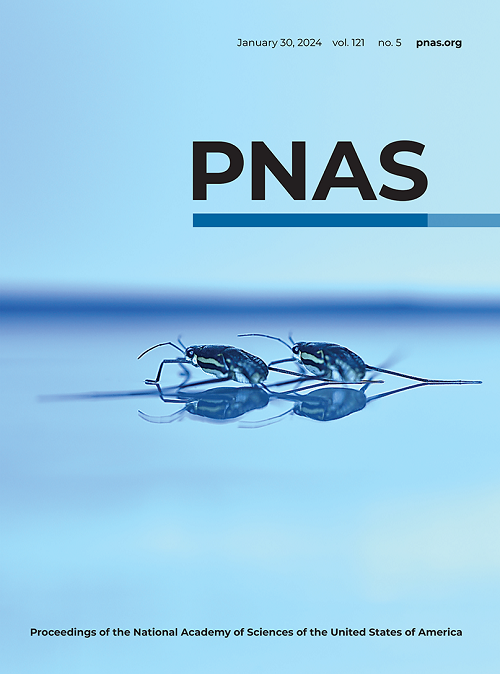Optimal kinetics for catalytic cycles from a single path-sampling simulation.
IF 9.4
1区 综合性期刊
Q1 MULTIDISCIPLINARY SCIENCES
Proceedings of the National Academy of Sciences of the United States of America
Pub Date : 2025-07-24
DOI:10.1073/pnas.2500934122
引用次数: 0
Abstract
A catalyst's efficiency for accelerating a reaction rate is determined by its molecular structure and interactions with the substrate. While one can predict kinetics for a particular molecular model, tuning the (potentially many) model parameters to reach a desired or optimal kinetics for a catalytic cycle is usually considered computationally prohibitively expensive, especially in solvated systems. Here, we show for a simple model representing a minimal catalytic cycle that such optimization is possible using only one single (path-sampling) simulation, by applying a maximum caliber based path reweighting method. We compute the path ensemble for a single parameter setting of the molecular interactions and then expand the kinetic landscape around these parameters. We find that optimal catalytic turnover or efficiency is orders of magnitude improved and is achieved by relevant parameters that induce strain in the system. Thus, path-reweighting based optimization is not only capable of finding important ingredients that lead to desired kinetic rates but can also identify the mechanistic origins of the rate optimization at a fraction of the costs of a direct evaluation. We demonstrate the versatility of the methodology on a minimal model for kinase signaling. The approach promises efficient computational design of (complex) catalysts using realistic models.从单路径采样模拟催化循环的最佳动力学。
催化剂加速反应速率的效率是由它的分子结构和与底物的相互作用决定的。虽然可以预测特定分子模型的动力学,但调整(可能有许多)模型参数以达到催化循环所需的或最佳动力学通常被认为在计算上非常昂贵,特别是在溶剂化系统中。在这里,我们展示了一个代表最小催化循环的简单模型,通过应用基于最大口径的路径重加权方法,仅使用一次(路径采样)模拟就可以实现这种优化。我们计算了分子相互作用的单一参数设置的路径集合,然后围绕这些参数展开了动力学景观。我们发现,最佳的催化周转或效率提高了几个数量级,并通过在系统中诱导应变的相关参数来实现。因此,基于路径重加权的优化不仅能够找到导致所需动力学速率的重要因素,而且还能够以直接评估成本的一小部分确定速率优化的机制起源。我们在激酶信号传导的最小模型上展示了该方法的多功能性。该方法有望使用现实模型进行(复杂)催化剂的高效计算设计。
本文章由计算机程序翻译,如有差异,请以英文原文为准。
求助全文
约1分钟内获得全文
求助全文
来源期刊
CiteScore
19.00
自引率
0.90%
发文量
3575
审稿时长
2.5 months
期刊介绍:
The Proceedings of the National Academy of Sciences (PNAS), a peer-reviewed journal of the National Academy of Sciences (NAS), serves as an authoritative source for high-impact, original research across the biological, physical, and social sciences. With a global scope, the journal welcomes submissions from researchers worldwide, making it an inclusive platform for advancing scientific knowledge.

 求助内容:
求助内容: 应助结果提醒方式:
应助结果提醒方式:


